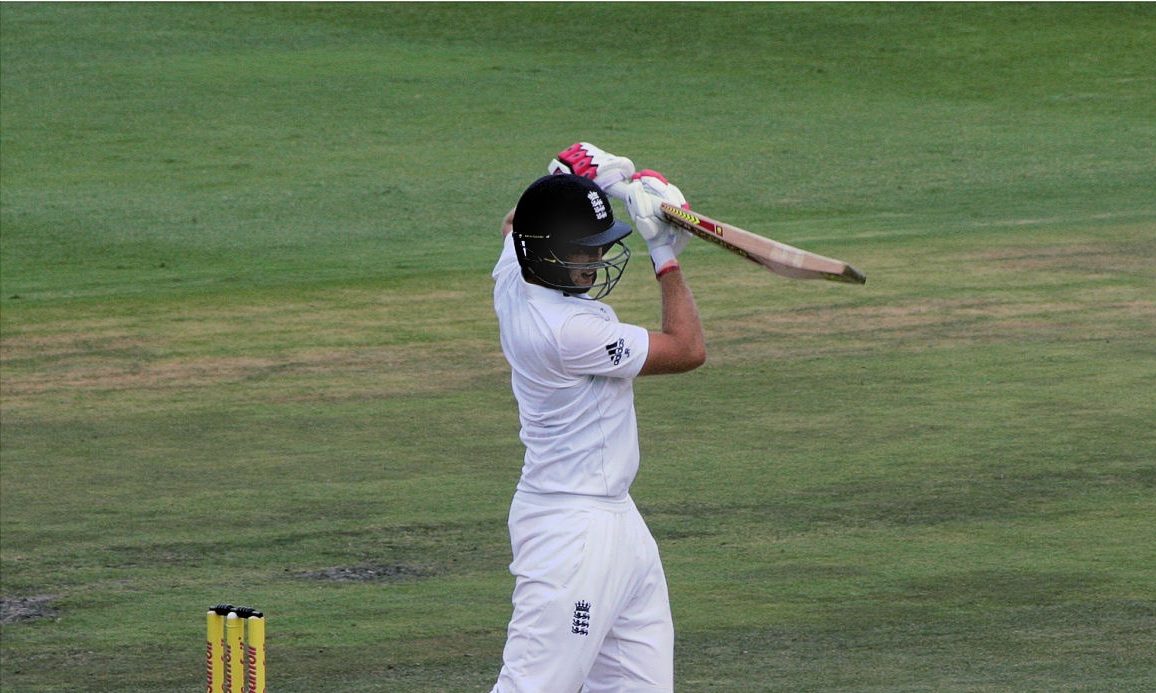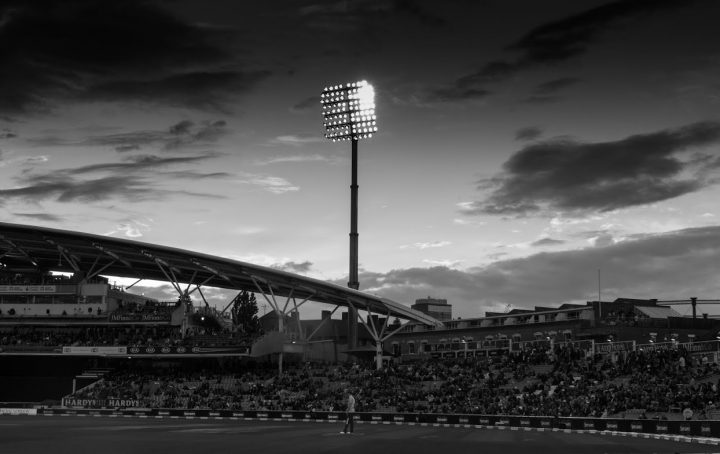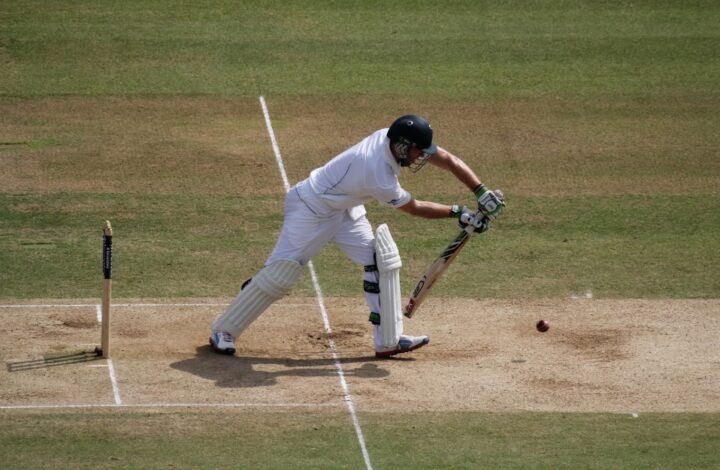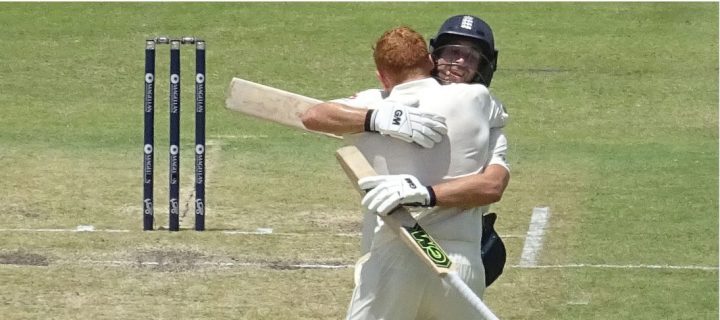On December 23rd, the IPL mini auction will be held in Kochi. Squads will be finalised for the 16th Indian Premier League, before the world’s highest-profile T20 competition kicks off in May.
The usual English faces will be there. Jos Buttler will hope to replicate his record-breaking form from last year’s competition, blasting four centuries to be crowned ‘Player of the Tournament’. World cup hero Ben Stokes is also back and expected to fetch the big bucks on his return to India after last year’s hiatus.
A name most wouldn’t expect to see in the auction is Joe Root. Having not played a T20 international since May 2019, you’d be forgiven for thinking that the 31-year-old’s career in the shortest format was finished. Yet come the 23rd, England’s red-ball phenom will be available for selection in India.
Root has never actually played in the IPL. In fact, he’s only entered the auction once, going unsold in 2018. Yet, with no salary expectation or preferred destination, could 2023 be the year that we finally see the golden boy of English cricket don the unnecessarily garish Indian colours?
Despite his recent absence, Root’s record speaks for itself. The right-hander averages an impressive 35.7 from his 32 T20 internationals. That’s more than every batter in England’s World T20 winning XI. There have been stellar knocks too: who could forget his match-winning 83 off 44 against South Africa in the 2016 World Cup? In pursuit of a record 230, Joe played an uncharacteristically aggressive knock, manoeuvring the pace of Rabada and Morris to hand England a outstanding victory.
The criticism most often levelled against Root in white-ball cricket is that he’s too slow. For some, a strike rate of 126.3 is simply too pedestrian for the modern game. But is it really? Root has often occupied the role of ‘anchor’, running hard and rotating the strike to allow the big hitters greater opportunity.
Since Root’s axing, England have opted against the use of an anchor, favouring high-striking bats like Liam Livingstone instead. But when the pressure’s on, and the bowlers are on top – like when England lost early wickets in the recent World T20 final – having someone of Root’s undoubted quality would’ve been far more valuable than another big hitter.
Other countries certainly see the value of an anchor. Kane Williamson’s steady stroke play remains crucial to New Zealand, while Virat Kohli plays at his own pace for both India and the Royal Challengers Bangalore. The anchor is still very much in fashion in franchise cricket.
With all the discussion surrounding whether Joe will play in the IPL, it’s perhaps worth asking another question: should Joe play in the IPL?
Root is unquestionably England’s best Test player. Should he play in the IPL, concerns will be raised as to whether it would hamper his red ball form. We’ve seen in the past how an over-exposure to short format cricket can damage a batter’s red ball technique.
Take Johnny Bairstow for example. Having focussed predominantly on white ball cricket prior to the 2019 World Cup, Bairstow found his technique ineffective against Australia’s skilful pace attack in that year’s Ashes series. Due to the lack of swing that the white Kookaburra provides, Bairstow had become overly bottom handed and reckless when driving. While advantageous in ODI and T20 cricket, these traits proved fatal in the Test arena. The result? Jonny averaged an abysmal 23.78 against the Aussies. Should Root play in the IPL, fears of a similar drop in form will arise.
However, it’s the example of Bairstow, and batters like him, that proves exactly why Root should be playing T20 cricket. After his dip in form, Johnny returned to the Test side for the 2021/22 Ashes, having made several technical changes. Said changes paid dividends, his stellar 113 in Sydney was England’s sole hundred in the series and a rare highlight in what was a miserable tour. Since then, the right hander has been on fire – a swashbuckling century in the Caribbean was just the prelude to a record-breaking summer.
Against New Zealand, Bairstow blasted England’s second fastest ever hundred off 77 balls, before striking a thunderous 162 off 157 in the next game. Two further monstrous tons would come against India only a match later.
True to England’s new ultra-attacking philosophy, Bairstow was aggressive throughout the summer, unfurling a plethora of brutish shots, all learnt and perfected playing T20 cricket. In the long run, his experience of playing for franchises has undoubtedly helped his overall game, and allowed him to play with the freedom and creativity of a player set free.
Joe Root is a wholly different player to Johnny Bairstow, of course, both in temperament and technique. However, a stint in India could still be beneficial for the Yorkshireman. If the recent Rawalpindi Test has proved anything, it’s that ‘Bazball’ is here to stay. There were switch-hits and scoops aplenty as three of England’s day one centuries came at over a run a ball. The IPL offers Root an opportunity to hone his attacking skills, testing his stroke-play against some of the world’s best bowlers.
Whether or not Root will be selected come the 23rd remains to be seen. Overseas spots are limited and each team is on a budget. However, at a relatively cheap price point, there are several teams that could snap him up.
With the largest purse and a Kane Williamson shaped hole to fill, the Sunrisers Hyderabad could be a natural landing spot. There’s also Kings XI Punjab, who’ve recently hired former England coach Trevor Bayliss. Having coached Root to World Cup glory in 2019, a Root / Bayliss reunion could be on the cards in Punjab.
Another possible destination is Chennai, where Root could team up with Moeen Ali for the Super Kings. The turning Chepauk pitch would allow the right-hander to face a lot of spin in CSK yellow, against which his strike rate is significantly higher. A handy bowling option too, Root’s part time off-spin could prove useful for the four-time champions.
Should he be selected or not, Joe Root remains eager to play in the Indian Premier League to test himself and improve his attacking game:
“Now, the next couple of years, might be a good time to explore playing a little bit more of that format and to see how far I can take that side of my game”, said Root to the Mail on Sunday. “It’s especially valid because of how we are trying to play now as a Test team.”
I wonder what Brendon McCullum would prefer him to do?
Will Symonds








Ultimately let’s not be fooled by the alleged cricketing motives. The IPL is about money.
If a sportsman, who can be one injury away from oblivion, has the chance to make a killing like this, irrespective of his form during his contract, he’d be a fool notbto take advantage.
Usually yes, that’d be the case. But Root’s likely to enter at one of the lowest price points this IPL. Still a huge amount of money, but not loads compared to the amount he’s payed by the ECB.
That doesn’t mean there can’t be cricketing motives as well. It’s not necessarily one or the other.
I think I would also differ about those players being one injury away from oblivion, although I take the general point: if you’re good enough to get an IPL contract, you’re very likely to have been earning several times the median wage in your country for at least several years. That’s not exactly what I’d class as oblivion.
Lets be honest, Root is quality in any format, and captained Yorkshire in the T20 Blast last season. His off spin is useful in all formats as well, and it will be a well remunerated few weeks.
England do also of course have an anchor, both Malan and Ben Stokes have fulfilled that role recently. Not picking him is in part at least a desire to manage his workload, given how many tests and ODers he has already played. We dont want him to give it away at 33 like Alastair Cook.
That very much depends on the player though: Anderson and Broad didn’t “give it away at 33”. I’m not sure Cook did either–he just, like Bell, got to the point where his batting wasn’t consistently test standard any longer.
In passing, I’m amazed that the England management don’t use more often a form of rotation that seems blindingly obvious: rest all-format players from any and all games for a year in whichever white-ball format doesn’t have a World Cup coming up.
Yeah, that resting policy would make sense.
So rather than Ben Stokes having retired from 50-over cricket, he could’ve just been rested in 50-over cricket initially, and then after the 20-over world cup rested from that format instead.
Resting/rotating players reveals how many meaningless fixtures they schedule and makes it difficult to charge outrageous prices for them to spectators and broadcasters.
THey keep ramping up prices while the quality of the product declines and there’a a big cost-of-living squeeze – something’s got to give.
…as seen in Perth!
On the quality yes, but the number of meaningless international fixtures (and series) is actually a canard. England are playing almost exactly the same number of days of bilateral cricket in the 2019-2023 World Cup cycle as in the 2003-7 one–and although I haven’t counted, I have the impression thewy’ll be playing less in the next one.
The culprits in the overloaded calendar are more the number of ICC events, which most countries want but the “Big Three” don’t so much, and of course the prevalence of club tournaments that international players want to play as well as play for their country.
Broad and Anderson only play one format and have more or less for the last 7 years. Cook didnt play 50 over after 2015 and barely played T20. So the issues regarding workload are extremely relevant.
…why do you give the example of Cook as player treatment to avoid, then? That doesn’t really make sense to me…
I didnt give him as an example of treatment to avoid, I gave it as an example of the benefit of resting players and letting them specialise, given the intensity of international cricket. He had played a fair bit of 50 over cricket which will all of added up to miles on the clock for him to bow out at a comparatively young age, albeit he had was not playing it for the last couple of years. That said, given the number of games England play, and the fact that he retired at 33 having played 161 games, shows the imporance of managing players workloads. As Root is already pushing 32 and has played so many ODers and tests, why increase his workload still further and risk him burning out prematurely?
As I posted above, it doesn’t need to involve increasing his workload–except maybe by playing in the IPL, which he wants to do anyway and which the ECB will be powerless to stop him doing if he gets a contract.